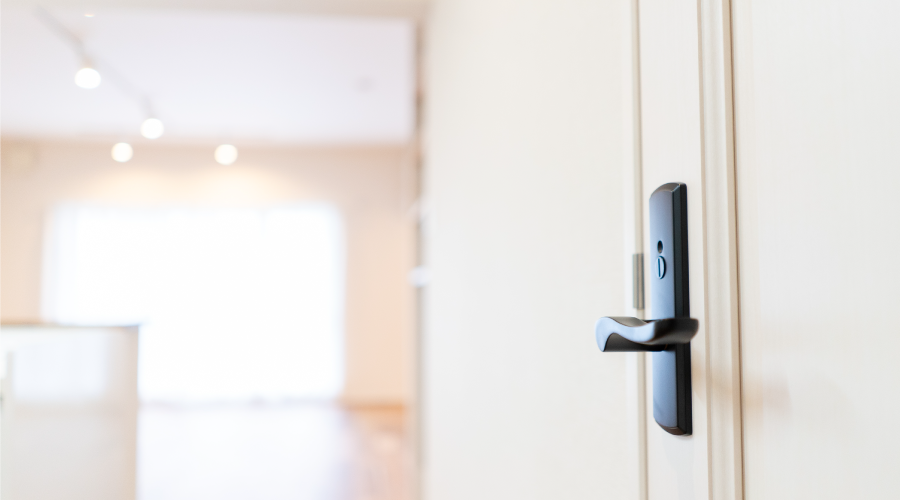Location, Purpose of Doors Factors Into Inspection Frequency
Managers determining the frequency and content of an annual inspection program for door hardware need to consider the location and purpose of each entry to a facility. The main entry door to a school, hospital, commercial office building, or retail facility might receive tens of thousands of cycles or more annually, while an emergency exit might be used infrequently, such as only during evacuation drills or for preventive inspection. So technicians often will check an entry door daily while checking the latter only a few times a year.
An entry's location, along with evolving codes and regulations, will affect the content of the inspection program. One example involves NFPA 80 2013 on documenting and reporting methods changes.
Since safety and security are the top priorities, these checks are essential for a good annual inspection program. Fire-rated doors must never be modified, blocked open, chained shut, or otherwise restricted. The pathways for doors to open must be kept clear. Visual inspections of the doors and areas around them are essential to ensure they will operate as intended when needed.
Inspectors should take special care with sliding fire doors and swinging-door latches. It is obvious when aisles are blocked leading to or away from a swinging door, but it can be less obvious when areas against the wall where the sliding door travels to open become obstructed.
When the link on the weight melts in a fire and the door starts to travel down the rail, heavy objects leaning against it or the wall might block it, and the door is blocked and will not close completely. Swinging-door latches cannot be taped to prevent latching, creating the opposite problem — unauthorized entry.
Another common problem is door-frame misalignment. While inspectors can discover problems such as leaking closers, some problems require operation of the door to become apparent. Door-frame misalignment is not always obvious. While scraping and sticking are more severe forms, these forms of misalignment do not have to be present to cause problems.
In the previous example — a bent frame due to blocked hinges — the door might operate properly, but an inspector would have to check it after closing to detect that the latch and strike are misaligned, preventing the latch from securing the door. The door has to be closed and pressure has to be applied to ensure the door is locked. If it is not — and it only takes a fraction of an inch to cause a problem — the door is misaligned.
During the routine periodic check, the inspector also can perform a visual inspection to check for proper operation and perform minor maintenance, such as tightening fasteners and lubricating hinges is done. If a door or its hardware need more intensive repairs, the inspector can record it and plan additional work at a later time. Since it is usually not economical to carry locks, latches, closers, sills, and other wearing parts in stock because of the infrequent need, managers might have to order them before workers can complete the repairs.
Thomas A. Westerkamp is a maintenance and engineering management consultant and president of the work management division of Westerkamp Group LLC.
Related Topics:













